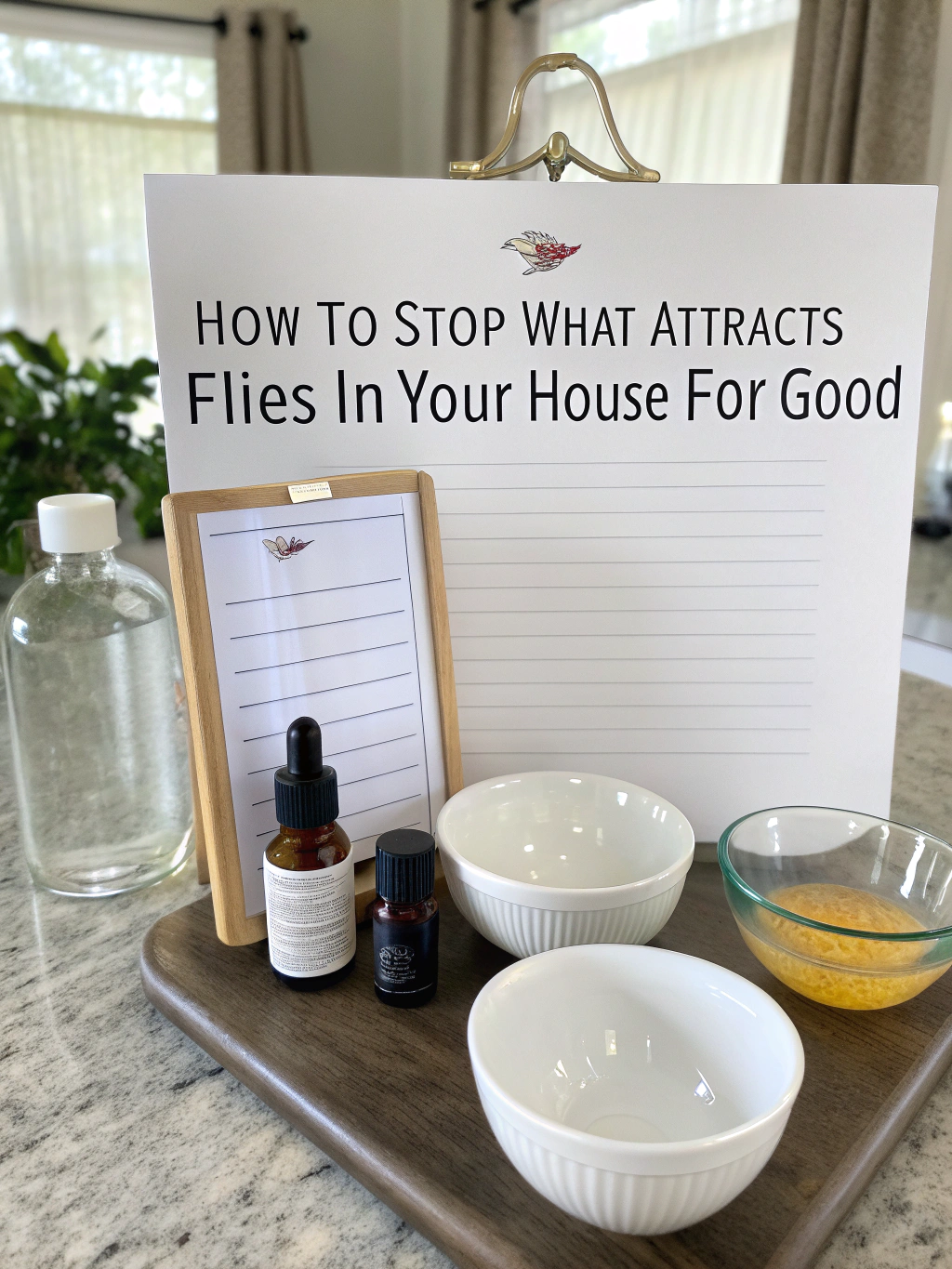How To Stop What Attracts Flies In Your House For Good
Table of Contents
Introduction
Did you know that the average house fly can taste food with its feet and has 360-degree vision? Yet despite their impressive sensory abilities, these pesky insects continue to invade our homes, leaving many of us wondering what attracts flies to our living spaces. If you’ve ever swatted frantically at these unwelcome visitors, you’re not alone. Flies aren’t just annoying—they can carry over 100 pathogens that cause diseases. Understanding what are flies attracted to is your first line of defense in keeping them away permanently.
Key Information Snapshot
- Main Attractants: Garbage, pet waste, overripe fruits, drains, moisture
- Detection Range: Flies can smell food from up to 4 miles away
- Lifespan: House flies live for 15-30 days but can reproduce quickly
- Health Risk: Flies can transfer bacteria like E. coli and Salmonella
- Best Deterrents: Essential oils, proper food storage, drain cleaning, fly traps, natural repellents
Detailed Explanation
Food Sources That Attract Flies
The most obvious thing what attracts flies is food. But it’s not just any food—flies have specific preferences. Overripe fruits emit ethylene gas as they ripen, which acts like a dinner bell for fruit flies. Meat and protein-rich foods attract house flies, while sugary substances draw in many fly species.
You might be vigilant about keeping food covered, but flies can detect microscopic food particles too small for you to notice. Even food residue on unwashed dishes or a tiny spill on your counter can invite them in.
Moisture and Dampness
Flies need water to survive, making moisture a significant attractant. Leaky faucets, condensation, or even consistently damp areas in your home become fly magnets. House flies specifically lay eggs in moist environments, turning a small dampness issue into a potential breeding ground.
Waste Materials
Perhaps the most powerful attractant is waste. Garbage bins, pet waste, and even dirty diapers emit odors that flies find irresistible. Research shows that flies are particularly drawn to decaying organic matter because it provides an ideal environment for their larvae.
Hidden Attractants You Might Miss
Some attractants aren’t as obvious. what are flies attracted to besides the usual suspects? Drains accumulating organic matter, houseplants with damp soil, and even dirty mop heads can attract flies. Even your pets’ water bowls, if not regularly changed, can become breeding sites.
Related Facts or Tips
Did you know? Female house flies can lay up to 900 eggs in their short lifetime, producing new generations every 7-10 days.
Tip: Vinegar-based cleaners are excellent for removing the microscopic food residues flies can detect but humans can’t see.
Did you know? Flies taste with their feet, so they land on food to determine if it’s worth eating.
Tip: Herbs like basil, lavender, and mint naturally repel flies when planted near entry points or kept in your kitchen.
Common Questions (FAQs)
Why do flies suddenly appear in my clean house?
Even in clean homes, small attractants like a fruit bowl, damp mop, or even your garbage disposal can attract flies. They can also enter through open doors or windows, especially if nearby homes or outdoor areas have attractants.
What smells do flies hate the most?
Flies detest the smell of essential oils like lavender, eucalyptus, lemongrass, and peppermint. They also avoid the scents of cloves, basil, and vinegar.
How quickly can a fly infestation develop?
With their rapid reproduction cycle, a couple of flies can turn into dozens within a week. Female flies lay eggs that hatch within 24 hours, and larvae develop into adults in just 7-10 days.
Are flies attracted to light?
Yes, many fly species are attracted to light, particularly UV light. That’s why you’ll often see them gathering around windows during the day.
Practical Applications or Real-Life Uses
Creating a Fly-Free Kitchen
- Store fruits in the refrigerator or in containers with tight-fitting lids
- Wipe counters with a vinegar solution daily
- Take out garbage every evening
- Clean drains weekly with an enzyme cleaner
- Keep a small potted basil plant on your windowsill as a natural deterrent
Setting Up Effective Fly Traps
Make your own fly trap by filling a jar with apple cider vinegar and a drop of dish soap. Cover with plastic wrap, poke small holes, and place near fly hotspots. The vinegar attracts flies, while the soap breaks surface tension, causing them to drown.
Mistakes to Avoid
Leaving Standing Water
Even small amounts of standing water in saucers under plants, pet bowls, or sink drains can attract flies. Empty and clean these regularly.
Ignoring Outdoor Sources
Focusing solely on indoor attractants while neglecting outdoor garbage bins, compost piles, or pet waste areas can undermine your efforts.
Using Chemical-Only Approaches
Relying exclusively on chemical sprays provides only temporary relief. Without addressing the underlying attractants, flies will return once the chemicals dissipate.
Overlooking Cracks and Entry Points
Flies can enter through the smallest openings. Failing to seal cracks around windows, doors, and utility entry points gives flies easy access to your home.
Conclusion
Understanding what attracts flies to your home is the crucial first step in permanently eliminating these pests. By targeting food sources, reducing moisture, managing waste properly, and implementing natural deterrents, you can create an environment that flies find inhospitable. Remember that consistency is key—maintaining these practices will ensure long-term results. Have you tried any of these methods? Share your experiences in the comments below, or check out our related posts on natural pest control for more eco-friendly solutions to common household pests.






